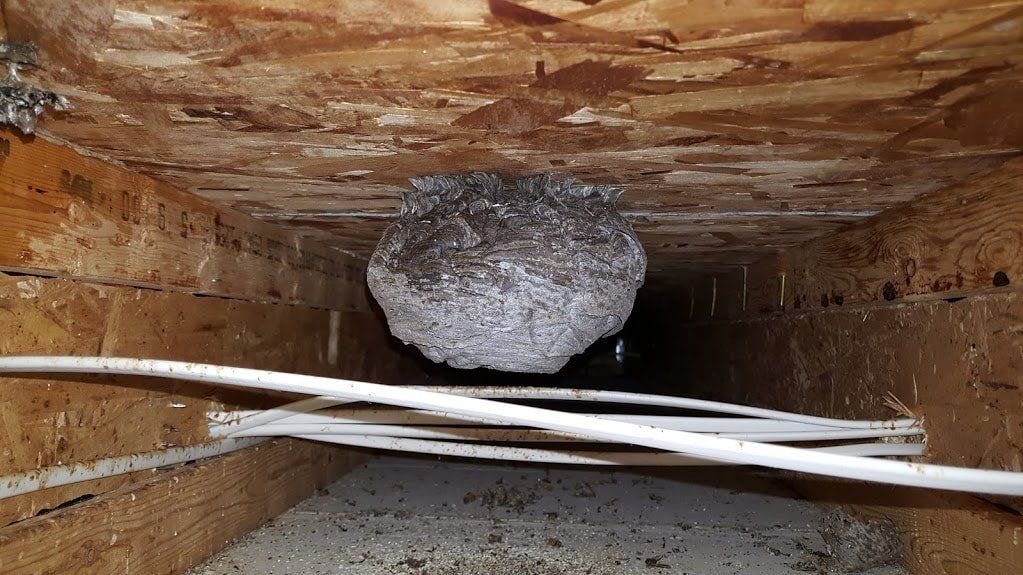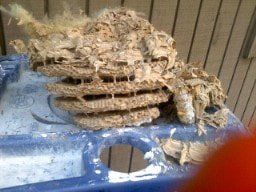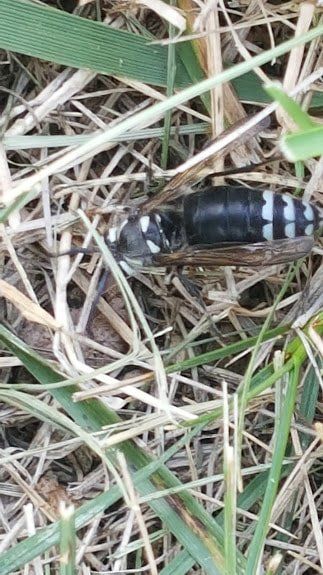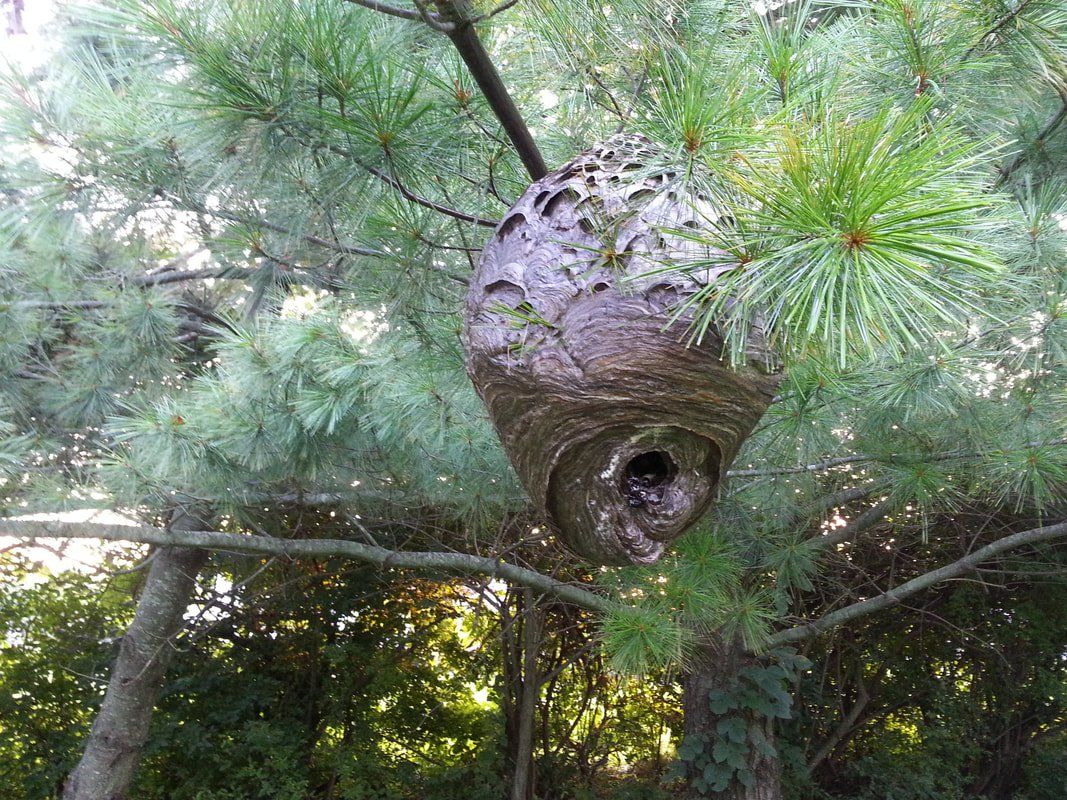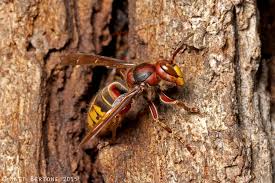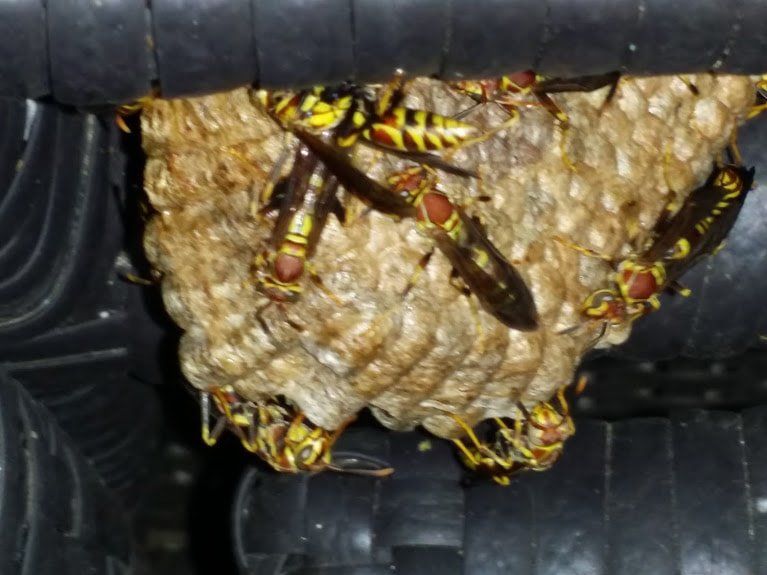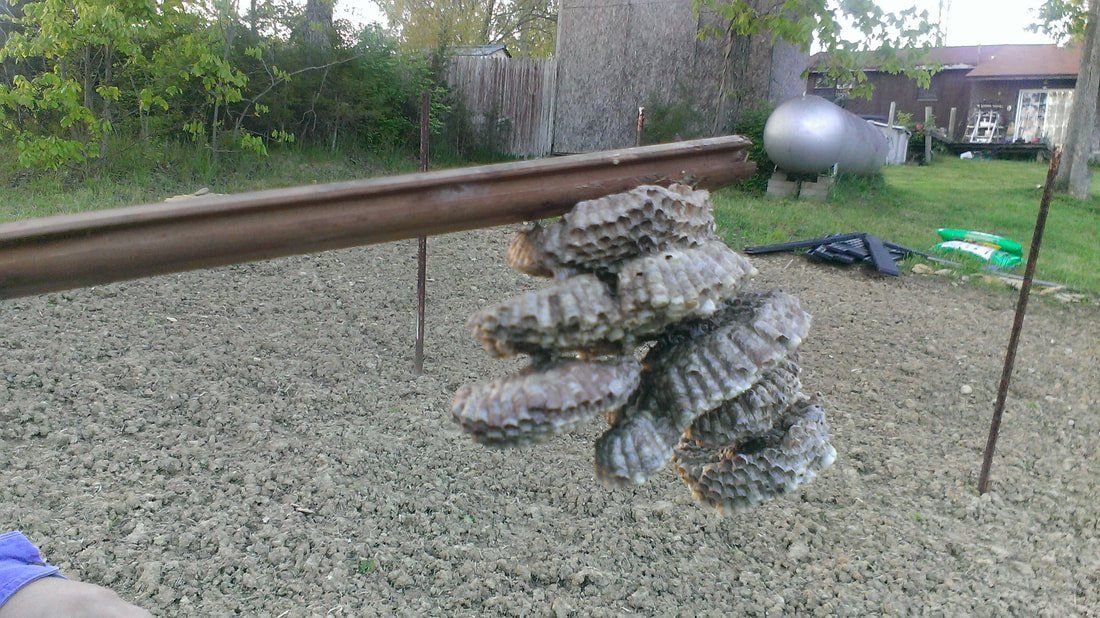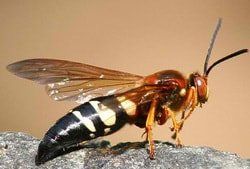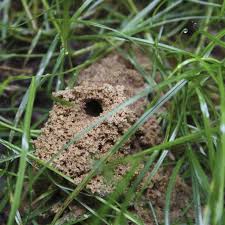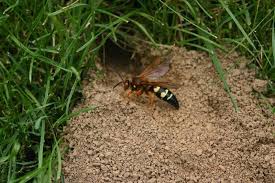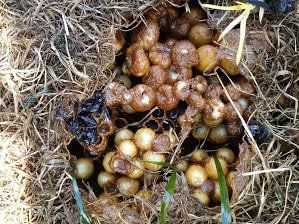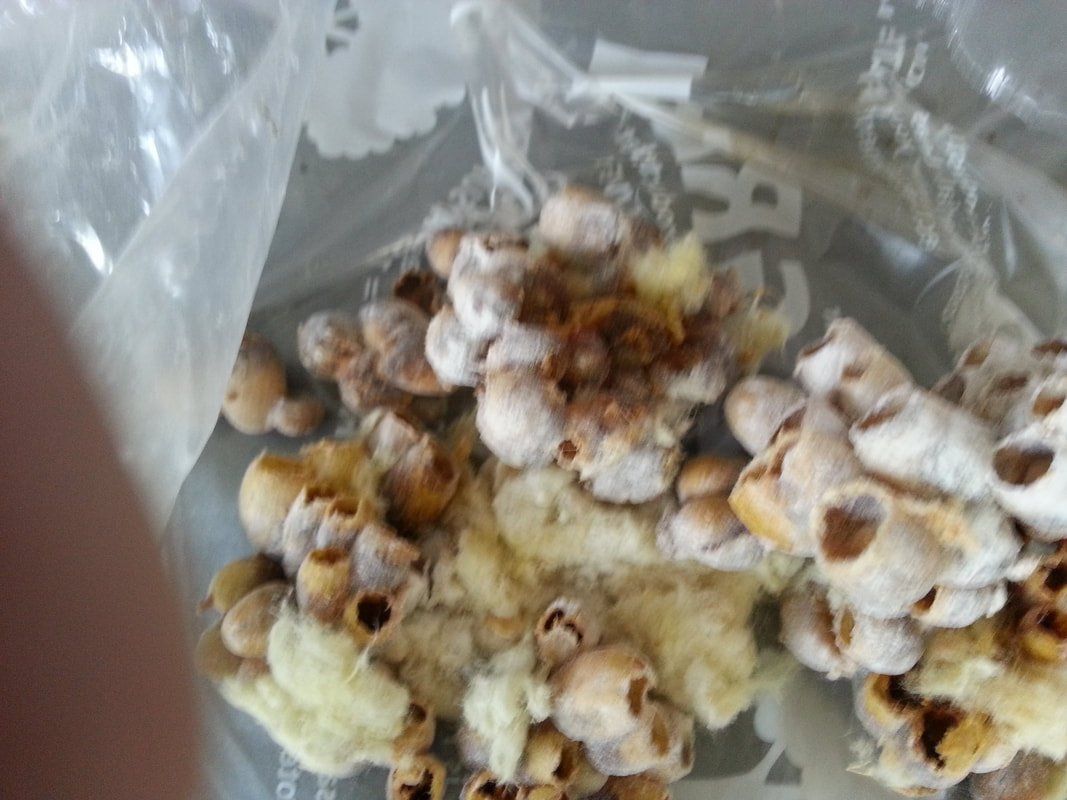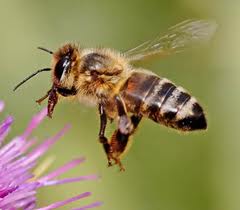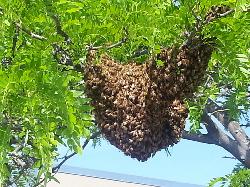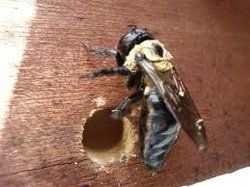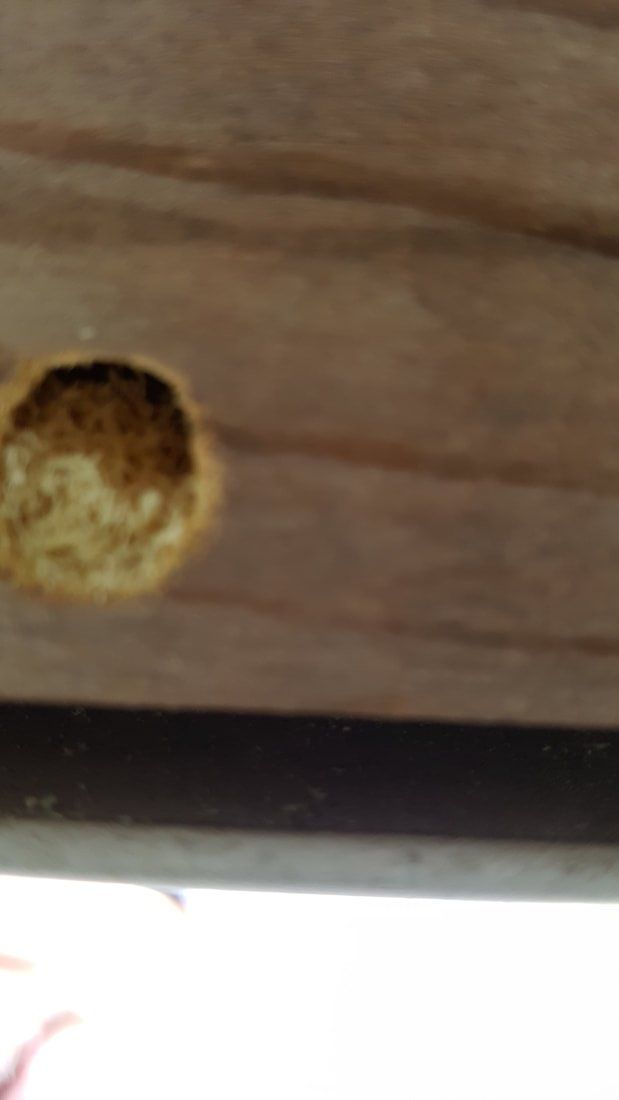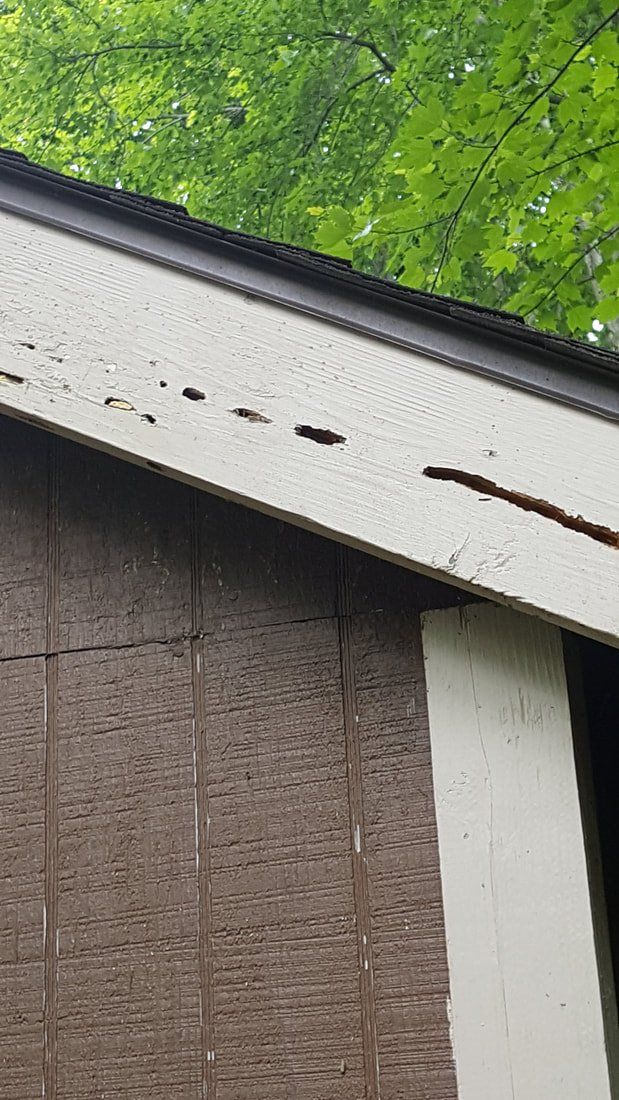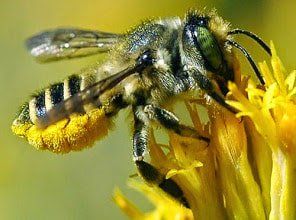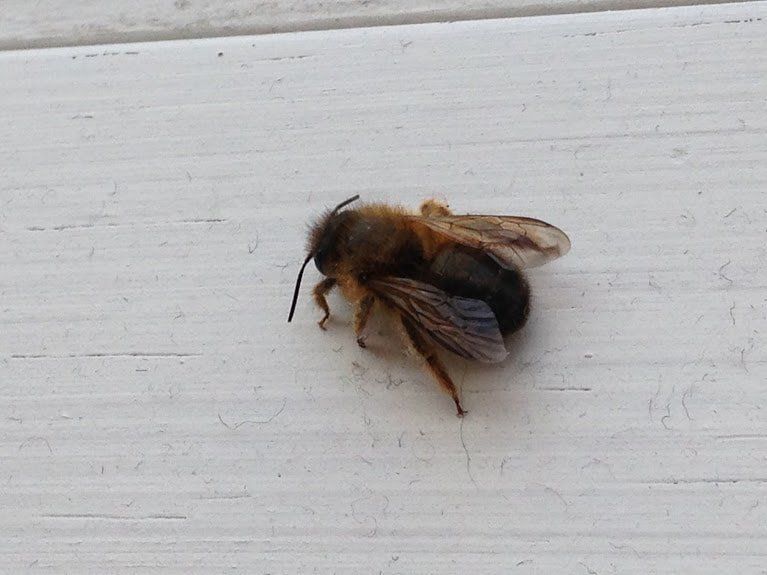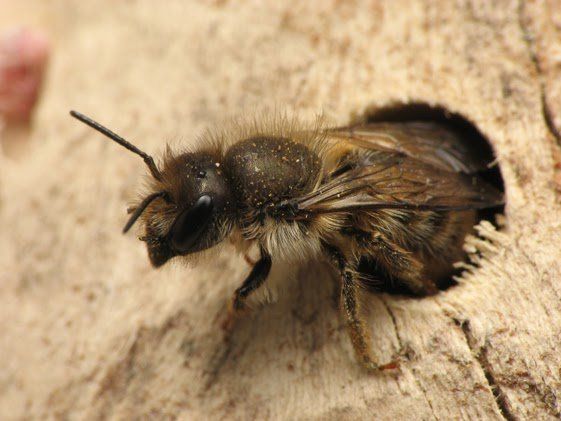know Your Bees
What Type Of Bee Issue Do you Have?
Click On All Pictures to learn More
Yellow Jackets
Yellow jackets are sometimes mistakenly called Bees, as they are similar in size and appearance and both sting, but they are actually wasps. (Yellow jackets are aggressive) Yellow jackets may be confused with other wasps, such as hornets and paper wasps. A typical yellow jacket worker is about 12 mm (0.5 in) long, with alternating bands on the abdomen; the queen is larger, about 19 mm (0.75 in) long (the different patterns on their abdomens help separate various species). Workers are sometimes confused with honey bees, especially when flying in and out of their nests. Yellow jackets, in contrast to honey bees, are not covered with tan-brown dense hair on their bodies, they do not carry pollen, and do not have the flattened hairy hind legs used to carry it.
These species have lance-like stingers with small barbs, and typically sting repeatedly, though occasionally a stinger becomes lodged and pulls free of the wasp's body; the venom, like most bee and wasp venoms, is primarily only dangerous to humans if allergic, unless a victim is stung many times. All species have yellow or white on their faces. Yellow jackets build nests in trees, shrubs, or in protected places such as inside man-made structures, or in soil cavities, mouse burrows, etc. They build them from wood fiber they chew into a paper-like pulp.
Yellow jackets' closest relatives, the Hornets, closely resemble them, but have larger heads, seen especially in the large distance from the eyes to the back of the head.
Hornets
Hornets are the largest of wasp. some species can reach up to 5.5 cm (2.2 in) in length.Hornets have stings used to kill prey and defend hives. Hornet stings are more painful to humans than typical wasp stings because hornet venom contains a large amount (5%) of acetylcholine Individual hornets can sting multiple times; unlike typical bees , hornets and wasps do not die after stinging because their stingers are not barbed and are not pulled out of their bodies.Hornets, like many social wasps, can mobilize the entire nest to sting in defense, which is highly dangerous to animals and humans. The hornet attack pheromone is released in case of threat to the nest.If a hornet is killed near a nest it may release pheromone which can cause the other hornets to attack. Materials that come in contact with pheromone, such as clothes, skin, and dead prey or hornets, can also trigger an attack, as can certain food flavorings, such as banana and apple flavorings.. You may recognize their large paper nest in trees.
Wasps
Wasps build their nests in a variety of places, often choosing sunny spots. Nests are commonly located in holes underground, along riverbanks or small hillocks, attached to the side of walls, trees or plants, or underneath floors or eaves of houses. Wasp nests are most easily found on sunny days at dawn or dusk as the low light levels make it easier to spot the Wasps flying in and out of their nests. Wasps will attack and sting humans, particularly if threatened, so care should be taken around Wasps and their nests. Wasp nests found in dangerous places (such as in houses or in commonly used public spaces)
Cicada Killers
Although cicada killers are large, female cicada killer wasps are not aggressive and rarely sting unless they are grasped roughly, stepped upon with bare feet, or caught in clothing, etc. One author who has been stung indicates that, for him, the stings are not much more than a "pinprick".[2] Males aggressively defend their perching areas on nesting sites against rival males but they have no sting. Although they appear to attack anything that moves near their territories, male cicada killers are actually investigating anything that might be a female cicada killer ready to mate. Such close inspection appears to many people to be an attack, but male and female cicada killers do not land on people and attempt to sting. If handled roughly, females will sting, and males will jab with a sharp spine on the tip of their abdomen. Both sexes are well equipped to bite, as they have large jaws; however, they do not appear to grasp human skin and bite. They are generally non-aggressive towards humans and usually fly away when swatted at, instead of attacking.This ground-burrowing wasp may be found in well-drained, sandy soils to loose clay in bare or grass-covered banks, berms and hills as well as next to raised sidewalks, driveways and patio slabs. Females may share a burrow, digging their own nest cells off the main tunnel. A typical burrow is 25–50 centimetres (10–20 in) deep and about 1.5 cm (0.59 in) wide. In digging a burrow, the female dislodges the soil with her jaws and, using her hind legs, pushes loose soil behind her as she backs out of the burrow. Her hind legs are equipped with special spines that help her push the dirt behind her. The excess soil pushed out of the burrow forms a mound with a trench through it at the burrow entrance. Cicada killers may nest in planters, window boxes, flower beds or under shrubs, ground cover, etc. Nests often are made in the full sun where vegetation is sparse.
Bumblebees
Bumblebees are social insects that are characterised by black and yellow body hairs, often in bands. However, some species have orange or red on their bodies, or may be entirely black. Another obvious (but not unique) characteristic is the soft nature of the hair (long, branched setae), called pile, that covers their entire body, making them appear and feel fuzzy.
Like their relatives the Honey bees , bumblebees feed on necter and gather pollen to feed their young. Bumblebees form colonies, which are usually much less extensive than those of honey bees. This is due to a number of factors including the small physical size of the nest cavity, the responsibility of a single female for the initial construction and reproduction that happens within the nest, and the restriction of the colony to a single season (in most species). Often, mature bumblebee nests will hold fewer than 50 individuals. Bumblebee nests may be found within tunnels in the ground made by other animals,
Honeybees
Honeybees are not native to the USA. They are European in origin, and were brought to North America by the early settlers.
Honeybees are not aggressive by nature, and will not sting unless protecting their hive from an intruder or are unduly provoked.
Honeybees represent a highly organized society, with various bees having very specific roles during their lifetime: e.g., nurses, guards, grocers, housekeepers, construction workers, royal attendants, undertakers, foragers, etc.
The queen bee can live for several years. Worker bees live for 6 weeks during the busy summer, and for 4-9 months during the winter months.
The practice of honey collection and beekeeping dates back to the stone-age, as evidenced by cave paintings.
The honeybee hive is perennial. Although quite inactive during the winter, the honeybee survives the winter months by clustering for warmth. By self-regulating the internal temperature of the cluster, the bees maintain 93 degrees Fahrenheit in the center of the winter cluster (regardless of the outside temperature).
This is a Honeybee. The honeybee is the only bee the produces Honey.
This is a swarm off honey bees. Every Six to nine weeks Part of the hive will leave with their queen. They will be in search of a new place to build a colony. Before they leave honeybees will birth a new queen. The new queen will take over the hive that was left behind.
This is a Honeybee Hive. This hive is a few months old. The comb is yellow. If the comb was white this would be a new hive.
Carpenter Bees
Carpenter bees, also dubbed the ‘wood boring bee’ got their name from their ability to drill through wood and nest inside the hole that they drilled. These bees are honestly some of the most amazing bees in the world due to the fact that their hole is almost always nearly perfectly the same size: a half of an inch in diameter. How many insects can make a near perfect circle in a piece of wood? Not many and that is why the carpenter bee is one of the most interesting bees in the world … next to the honey bee of course!
There are many different ways to tell a carpenter bee from other bees. The adult body length is usually about one half of an inch to about one inch and they are so robust they even resemble the bumble bee a little bit. The top surface of the abdomen on the carpenter bee is almost bare and it is going to be shiny. You can tell a male from a female by the color of their face: the male is going to have a yellow face while the female is always going to have a black face. These bees are usually bare and shiny black, though some have a few little yellow markings on the rear.
This is a Carpenter Bee.
This is a Carpenter bee nest. Carpenter bees bore a perfect half in hole. There will be several tunnels in which she will lay her eggs. You can see saw dust coming out of the hole. This a sure sign that you have carpenter bees.
Carpenter Bee Nest and Damage.
Mason Bees
There are about 140 species of mason bees in North America. All are solitary bees. The males do not have a stinger, and the females will only sting if trapped or squeezed. Of the 4,000 bee species in North America, mason bees are among the easiest to raise, while also being gentle and amazing pollinators. By raising solitary mason bees, we can increase their population. It's a great way to supplement the stressed Honey Bee and sustain our future food supply. Solitary bees make many trips to collect nectar and pollen from flowering plants for their nests; thus they serve as important pollinators. solitary bees vary in color and size. Many solitary bees are about ¼ - ¾ inches in size and may be dark-colored, or metallic green or blue.

